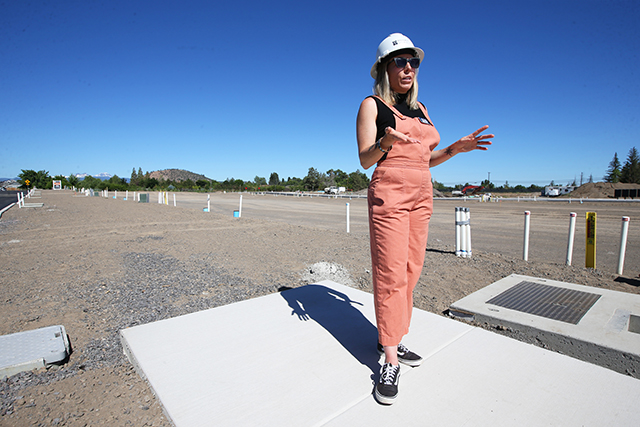Medicaid group to spend profit on health programs
Published 12:00 am Thursday, June 16, 2016
The group that administers Medicaid in Central Oregon is unique in that most of its profits must go back to the community. Luckily for the community, those profits have been substantial in recent years.
PacificSource Community Solutions is the nonprofit insurer that runs the region’s coordinated care organization, or CCO, the entity that receives money from the state to treat people who rely on Medicaid, known as the Oregon Health Plan.
Trending
After paying all the bills and keeping 2 percent profit for itself, as its contract permits, PacificSource rounded out 2014 with $6.6 million left over, more than double the amount projected near the end of that year.
Although 2015’s profit figure is not yet solidified, it’s shaping up to be roughly $4 million, according to a financial statement posted online by the Oregon Health Policy Board. CCO leaders declined to comment on that number, citing ongoing discussions with the state about a potential rebate.
Central Oregon’s CCO is the only CCO in the state whose contract allows it to direct most of its profit (aside from the 2 percent it keeps) to projects designed to improve health and wellness in the community at large, not just among the Oregon Health Plan population. It does this by handing the money over to the Central Oregon Health Council, a group of mostly local government and health care leaders who oversee the CCO.
The Health Council board approved funding for the first such project last week: just under $374,000 will go to Oregon State University-Cascades, which is building a four-year campus in Bend. Most of the money will fund a nurse who will over the next three years assess incoming students and refer them to primary care, behavioral health or other types of local providers.
“I think that this really speaks to our efforts to be more upstream, which is getting in front of folks,” said Donna Mills, the Health Council’s executive director. “The younger they are, the better we can control the way that they take care of themselves and how they use the health delivery system.”
Anyone — even “the gas station man,” Mills said — can submit project proposals. The ones that are chosen will address the leading health issues facing the Central Oregon population.
Trending
A group of Central Oregon community leaders in recent months teamed with the Health Council to create the 2016 to 2019 Regional Health Improvement Plan, which identifies priority areas for health improvement and strategies for solving problems in those areas. Mills said the projects that receive funding will align with the plan, which can be viewed at the Health Council’s website.
Significant health challenges for the region include such things as cardiovascular disease, which caused 21 percent of male admissions to St. Charles hospitals in 2014 and 14 percent of female admissions that year. Diabetes, depression, substance use and poor oral health are also challenges, as is the prevalence of low birth weight newborns and women who lack access to prenatal and postnatal care.
Many of Central Oregon’s health issues can be traced back to social determinants of health — issues including poverty, poor education, lack of housing and exposure to childhood trauma. The Regional Health Improvement Plan contains potential interventions to help solve those problems.
For her part, Mills said she wants people to think outside the box.
“If we do the thing we’ve always done, we’re going to end up with what we’ve always got,” she said. “So we have to be thinking about different ways to crack the nut, if you will.”
While profit is usually a good thing, too much of it can be symptomatic of a problem if you’re a coordinated care organization. One potential reason for profit is that people aren’t accessing the care they need. The Health Council voted in October to move forward with a $375,000 study that will measure how well people are accessing care through the Oregon Health Plan.
Lindsey Hopper, PacificSource’s vice president of Medicaid programs, said there are lots of factors that impact how the CCO’s budget performs, such as the number of people in the CCO, the type of medical services people receive and how often and the amounts specialists charge for their services.
While Mills said she supported doing the access study, she said she doesn’t think access is a problem for people who rely on the Oregon Health Plan in Central Oregon. People have told her they have to wait 6 to 8 weeks to see their doctor for a preventive check-up.
“Well, it took me 6 to 8 weeks for a well-woman check when I got here,” said Mills, who took over as director in November. “So it’s not just the OHP clients, it’s everybody.”
— Reporter: 541-383-0304,
tbannow@bendbulletin.com








